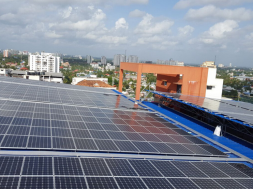
600MW pump storage plant seen meeting peak-hour rural power demand
New Delhi: India is increasingly looking at hydro pump storage schemes, rather than battery storage, for utility scale projects to solve its energy storage problems. One such instance is the proposed 600 mega watt (MW) pump storage plant of the state-run Odisha Hydro Power Corp (OHPC) to be set up at an investment of ₹3,000 crore to meet peak-hour rural electricity demand.
OHPC will partner with the private sector for the project planned near Upper Indravati multi-purpose reservoir, which already has an operational 600 MW hydropower plant. The idea is to use cheap solar power during off-peak hours to raise water to a height and then release it into lower reservoir to generate electricity.
The private sector firm, which is expected to mobilise $210 million investment for the project, will be selected through a bid process run by World Bank’s International Finance Corporation (IFC).
“It will be one of the cheapest projects given the topography and we have seen a lot of interest from prospective investors. There is no other hydropower project on offer of this size,” said Neeraj Gupta, urban sector public private partnership lead for Asia Pacific, IFC.
The project will reduce the average cost of electricity purchased by Grid Corporation of Odisha, according to IFC. Solar power generated during day needs to be stored in batteries. Given that battery storage is still expensive and needs to be replaced, pump-storage projects are being looked at as a viable option. This assumes importance given India’s clean energy push, with India’s ambitious target of 175 gigawatt (GW) by March 2022. Of this 100 GW is to come from solar.
The concept is also gaining traction from the private sector with the Hyderabad-based Greenko Group planning to set up India’s first large integrated clean energy storage project along with generation projects totalling 10 gigawatt (GW) at an estimated investment of around Rs50,000 crore, Mint reported on 5 June.
With an average power demand of 4,000 MW, Odisha is betting big on this project. This comes against the backdrop of electricity finally reaching all of India’s 597,464 census villages on 28 April, setting the stage for universal household electrification.
“The state’s electricity demand is going to increase given that a lot of rural electrification work has been done. While currently, electricity can be stored in batteries, the costs are very high and they have low capacities,” Sanjib Kumar Tripathy, director, operations, OHPC, told Mint.
“From 10 am to 5 pm when the solar power generation is good, the electricity demand is low. We want to supply electricity to the villages at night. In such a case, a hydro pump storage scheme provides an effective storage solution, thereby helping us supply electricity to the villages at night. It will make the villages safe and improve their socio-economic standards,” he said.
India’s energy demand is likely to go up by 2.7-3.2 times between 2012 and 2040, according to the government’s policy think tank, NITI Aayog. India’s per capita energy demand is expected to reach 1,055-1,184 kilogram of oil equivalent (kgoe) in 2040 from 503kgoe in 2012.
India had set a target universal household electrification by 31 March 2019. With electricity reaching all villages, the government’s focus is now on providing electricity connections under Saubhagya, under which electricity connections will be provided to 40 million Indian homes by December 2018.
India’s clean energy strategy is part of its gameplan to reduce its carbon footprint by 33-35% from its 2005 levels by 2030, as part of its commitments to the United Nations Framework Convention on Climate Change adopted by 195 countries in Paris in 2015.















